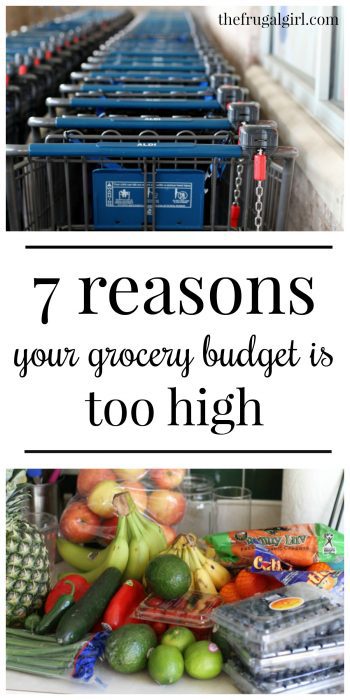
I know…a LOT about current grocery prices is completely out of our control! Inflation is just nuts.
But if you make these 7 mistakes, your bill might be higher than it needs to be. 😉
1) You’re shopping at the wrong store.
While you can find bargains at almost any store, where you shop does have a huge effect on your grocery bill.
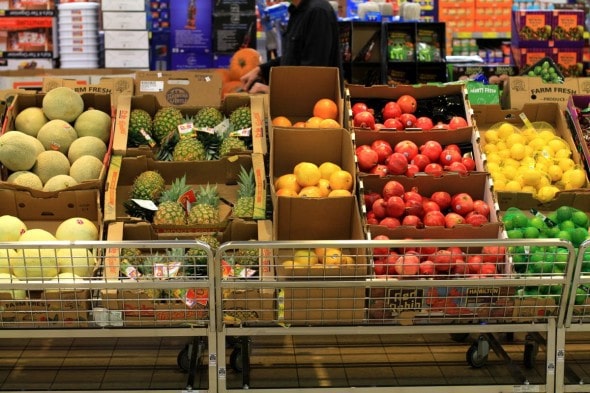
If you’re lucky enough to live in an area with multiple grocery stores, explore them all and figure out which one has the lowest prices overall.
It may seem small, but the difference of $0.25-$0.50 on 100 weekly items really adds up!
(If you have an Aldi grocery store in your area, DO give it a try. Aldi has insanely good prices and their food is just as good as what’s carried in larger grocery stores.)
2) You’re buying more than you can use.
Americans throw away 40% of our food.
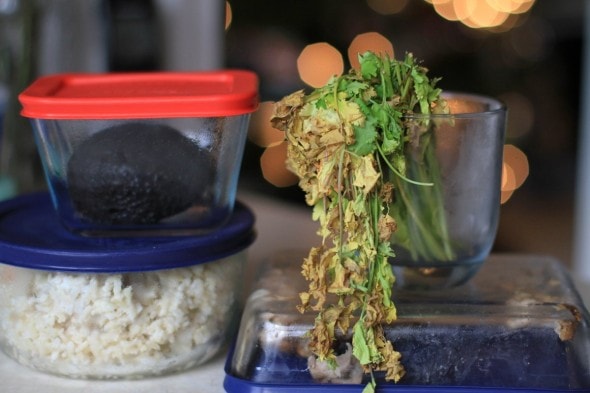
This means on average, each household is chucking $2, 275 of food in the trash each year. That’s $189 a month!
Want to keep that money in your pocket? Here are ten ways to stop wasting food.
3) You’re buying disposable goods.
I’m not going to suggest you give up toilet paper, but a lot of other disposable goods are pretty simple to give up.
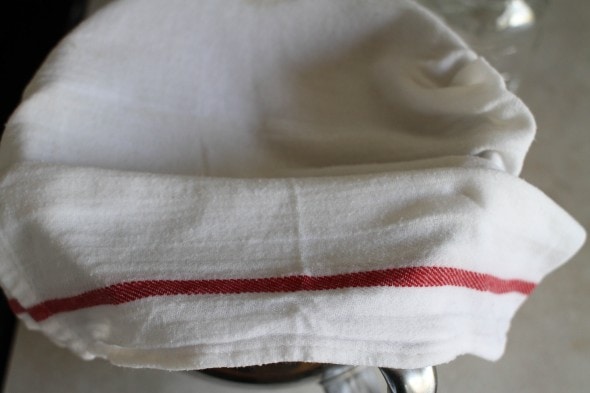
Use real towels to dry your hands, use a washcloth to wipe your counters, and put leftovers into containers instead of bags.
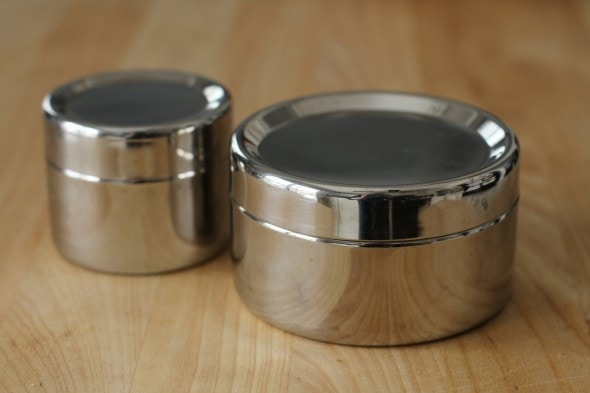
(Here are some of my favorite reusable containers.)
If you have a dishwasher, using real dishes instead of plastic or paper plates is super easy.
And if your household is small, real dishes aren’t even that hard to wash by hand.
4) You’re buying not-so-convenient convenience foods.
Honestly, most of what’s in the grocery store today is convenience food in some sense. We’re not buying chickens with feathers on them, after all, and that saves us a lot of time and mess.
But some convenience foods shave mere minutes off of food prep time while costing 2-3 times more.
For instance, a frozen smoothie mix consists of frozen berries with frozen yogurt chunks. You can just as easily pick up a container of yogurt and a bag of frozen fruit, and you’ll get a lot more bang for your buck.
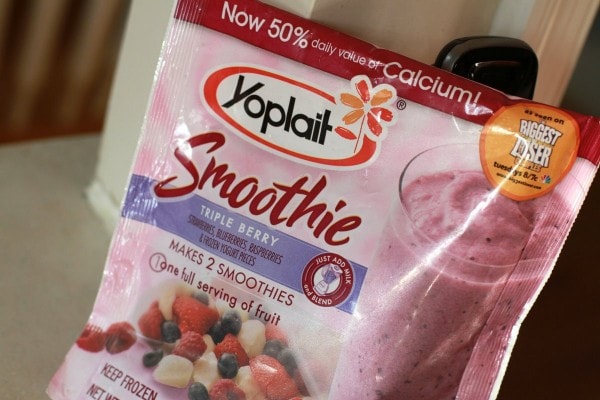
Or consider pancake batter that comes in a squeeze bottle. Even from scratch, pancake batter takes about 5 minutes to put together and the cost is pennies on the dollar.
5) You’re buying non-grocery items at the grocery store.
Grocery stores have a high mark-up on items like seasonal furniture, toys, and other non-grocery items, so it’s usually cheaper to pick them up somewhere else.
6) You’re buying too many beverages.
While food is necessary for survival, the beverages we buy at the grocery store generally are not.
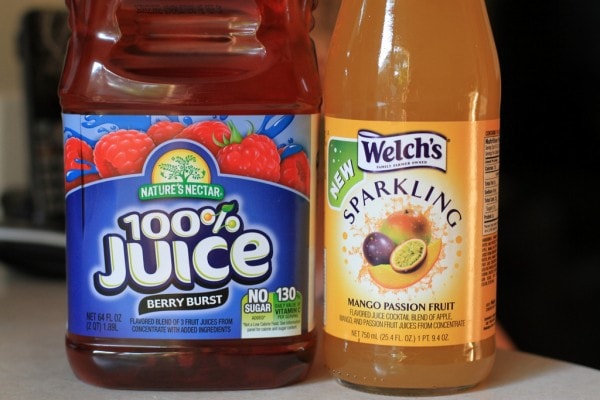
After all, water is really the only thing you need to drink, and you can get that out of your tap.
(If your tap water is nasty, try a pitcher with a filter. It’ll be way cheaper than bottled water.)
If you can’t give up your lemonade, juice, soda, iced tea, kool-aid, at least consider cutting back. These drinks are eating up part of your grocery budget and all you’re getting are (mostly) empty calories.
Drink more water and save your money for food!
7) You’re not buying private-label products.
Store-brand items have come a long way, and if you only buy name brands, you’re missing out on a big opportunity to save.
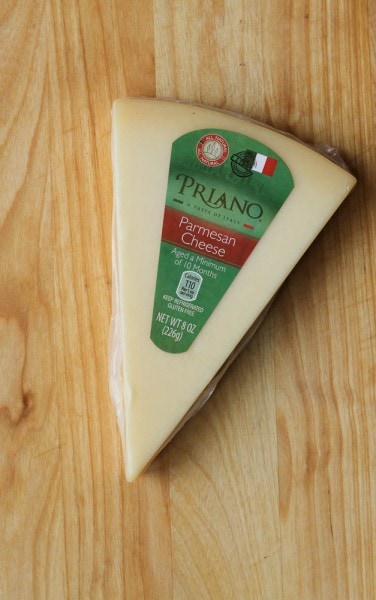
(Aldi Parmesan)
Many store-brand products are actually made by brand-name companies, and most come with a money-back guarantee so you can try the product risk-free.
You’ll probably find a few instances where you really do prefer the name brand, but you’ll also discover plenty of cases where the store-brand works out just fine.
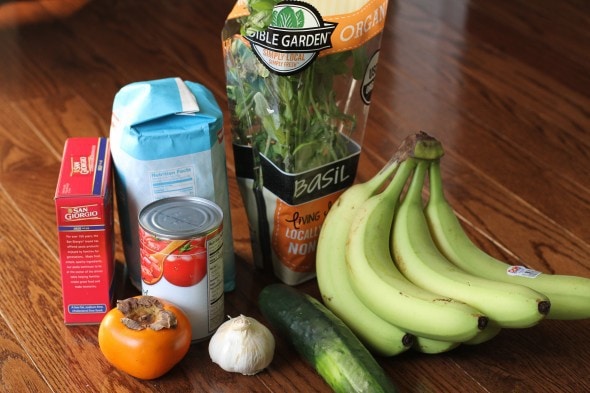

Leslie
Friday 15th of November 2024
I agree with all the comments and the post. I would add that buying in bulk only makes sense if it doesn't use up your cash flow by the end of the month. Your on hand cash has a value and most people don't consider that: using it up for things you might not eat or use for 6 months then means you'll be short at the end of the month you bought it in and you may end up using credit or having to take $ out of savings to cover it, etc. In the 'old days' people had a cash allowance for food for the entire month and couldn't or didn't go over it. It's not a bad exercise to experiment with those kinds of limits one way or another even if you're not using cash. And try to plan carefully for the end of the month to use stuff up and then restock after the 1st or whenever your next paycheck is. I avoid buying any fridge door items (assuming the commenter here meant things like condiments) until it is completely out or will run out before my next major shop, even if it is on sale, as inevitably my estimates of how long it will take to use up the open one is wrong and I could have waited and kept my cash flow. When you multiple this times multiple premature or bulk purchases per month, it really adds up. Also as a former accountant, if I have really bought a lot of stuff at the end of the month I won't use until the following month, for whatever reason, or have a large amount to carry over into the next month food wise, I enter that value (with tax, estimated) as a Prepaid in my accounting/bookkeeping software to go towards the next month's food budget--most of these kinds of software have that function. That way it is easier to see if my budget is being met or over/under. While I am not a fanatic about it, it is helpful and not time consuming. At year end, if I have a lot of food sitting around that will be for the next year, I also ballpark the value of that for a Prepaid entry, that way my yearly bookkeeping re budget vs. what we actually ATE is more accurate. If I buy stuff for dinner parties or birthday dinners at home, I will notate that value when entering the receipt into my accounting system, so that when I review my expenditures at year end, I can see those anomalies for budgeting purposes.
Penny from Boring, OR
Saturday 13th of May 2023
Use math to find unit rates and be aware of how much your typical portions cost. If I know a banana is 50 cents and an apple is 9o cents, I choose a banana for snack more often than an apple. A cup of my favorite tea costs 20 cents and a soda is 50 cents. Even if you simply choose the less expensive option twice as often, you'll save money AND still get to have your favorites some of the time.
Brandy Millington
Wednesday 10th of May 2023
I watch for beef roasts and pork roasts to go on sale then ask the butcher in my local grocery store to grind it or cut the pork loins into chops. HUGE SAVINGS sometimes upwards of $4 a pound.
The same grocer will slice a cooked roast ie: beef, ham, etc. That saves us about $10 a pound in the deli on roast beef…. $6 a pound on ham.
Susan
Wednesday 17th of April 2019
An elderly neighbor and i go to yoga twice a week geared to sr citizens. She likes to eat frozen yogurt so she picks up tons of it when it goes on sale at publix and keeps it in a small freezer. I went along shopping and got the 2 for 1 deals on pasta and sauce
Vy
Tuesday 22nd of May 2018
I make "Fried Rice" a lot, which is basically every type of veggie we have that's just about to go bad, chopped up and fried in a big pan in a bit of your favorite oil. Sometimes I'll add leftover meat. As it's cooking stir in a bunch of cooked rice, sizzle it all up with spices (curry, yum! but almost anything works, experiment!). I make a hole in the middle and crack in 4+ eggs, scramble them up and then stir everything together, serve with soy sauce. You've just saved all your veggies from the compost and fed a ton for cheap (and this freezes well).
Shop local farmer's markets, the freshest, sweetest, best stuff is what's cheapest.
Grow what you can! It's easier than you think, stuff wants to live. Keep trying, you'll get the hang of it. Get a basil plant from in front of your local grocery or hardware store, put it in the sun and keep it moist, you'll have fresh basil all summer long, yummm.